World Tsunami Awareness Day - Spreading Awareness About Tsunami, Its Impact, Staying Safe and Its Mitigation
Any time they try to describe the tsunami to us, I am so touched by how high they look in the air, when they explain it with their hands-they go so high - Connie Sellecca
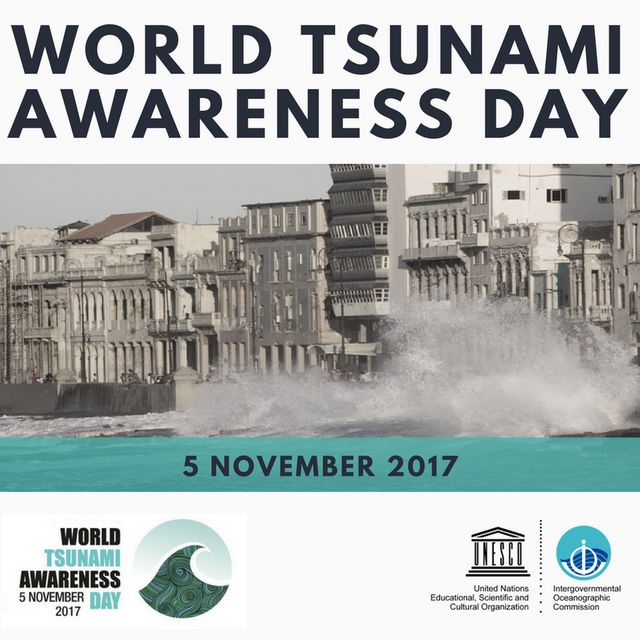

Today is World Tsunami Awareness day. It is a day set aside to remember and raise awareness among people across the world about tsunami, its dangers, its causes, and how to reduce tsunami risks whenever there's an impending or any case of tsunami.
The day is also set aside to stress on the importance of early warning systems in order to mitigate damage from the devastating natural calamity.
The United Nations General Assembly designated 5th November as World Tsunami Awareness Day in December 2015.
World Tsunami Awareness Day was the brainchild of Japan, which due to its repeated, bitter experience has over the years built up major expertise in areas such as tsunami early warning, public action and building back better after a disaster to reduce future impacts.
The date for the annual celebration was chosen in honour of the Japanese story of “Inamura-no-hi”, meaning the “burning of the rice sheaves”. During an 1854 earthquake a farmer in a village called Wakayama in Japan saw the tide receding, a sign of a looming tsunami. He set fire to his entire harvest (sheaves of rice) on the top of the hill to warn villagers, who fled to high ground. Afterwards, he built an embankment and planted trees as a buffer against future waves.
This was the first documented instance of a tsunami early warning.
The World Tsunami Awareness Day will be observed across the world today 5th November 2017, with the theme 'Reduce the Number of Affected People'.
What is a Tsunami?

A tsunami, also called a seismic wave, is a series of waves caused by the movement of a huge body of water.
The term tsunami signifies 'big wave in the port' in Japanese - and it was conceived by fishermen after they came back to shore to discover their villages crushed and devastated by a giant wave they had not seen adrift.
The killer waves can sometimes be 30cm over the water surface when in the vast sea, so go unnoticed by mariners.
However, as it comes to shallower waters, the wave is hindered and the top of the wave moves quicker than the base, making the ocean to significantly rise.
Tsunami can cause the ocean levels to ascend by as much as 30 meters, although they more often cause an ascent averaging three meters.
The tremendous energy of a tsunami can lift stones, flip automobiles and furrow down structures and anything it comes across.
Tsunamis are rare, powerful and unpredictable natural hazards, with devastating consequences for coastal populations caught in their path.
Tsunamis can strike any coast. Low-lying areas such as beaches, bays, lagoons, harbors, river mouths and areas along rivers and streams leading to the ocean are the most vulnerable. Tsunamis can happen any time, any season, and during any weather. They can be generated far away (across the ocean) or locally. Local tsunamis can arrive just minutes after a disturbance.
The vast majority is caused by earthquakes in active seismic areas and occurs along a limited range of inhabited shores around the world (CRED – UNISDR, 2016).
According to EM-DAT records, 16 major tsunamis killed 250,900 people in 21 countries between 1996 and 2015, most of which occurred during the Indian Ocean tsunami of December 2004 which caused an estimated 227,000 fatalities in 14 countries, with Indonesia, Sri Lanka, India and Thailand hardest-hit.
Rapid urbanization and growing tourism in tsunami-prone regions are putting ever-more people in harm’s way making the reduction of risk a key factor if the world is to achieve substantial reductions in disaster losses. Climate change adds to the frequency and intensity of extreme weather events, including tsunamis.
With warming temperatures, melting ice masses and rising sea levels, the resilience and capacity for inclusive sustainable development of coastal cities is deeply threatened.
This necessitates a better understanding of those events, their causes and their effects in turn, in order to reduce risk by increasing resilience, mitigating, and adapting to the impacts of
climate change.
How is a tsunami formed?
A tsunami can be formed in a number of different ways, but usually there are three things that have to happen.
An earthquake must measure at least 7.0 on the Richter scale, the sea bed must be lifted or lowered by the earthquake, and the epicentre of the earthquake must be close to the Earth's surface.
Earthquakes, volcanic eruptions, underwater explosions, landslides, meteorite impacts and other disturbances above or below water can potentially generate a tsunami.
While normal waves are caused by the winds as well as the Moon and the Sun, a tsunami is always caused by the displacement of a large body of water.
Tsunamis are sometimes called tidal waves, although this term is not popular among experts as they are not actually influenced by the tides at all.
What damage can tsunamis do?
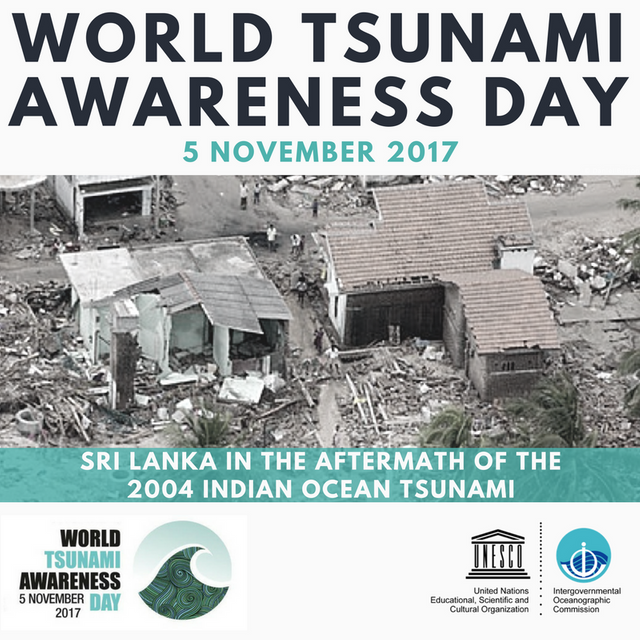
The impact of a tsunami is usually limited to coastal areas but the destruction could be immense.
Buildings and anything in the path of the waves is in danger of being destroyed and washed away, such is the force of the wave.
The 2004 Indian Ocean earthquake and tsunami, which struck off the west coast of Indonesia, left 250,000 people killed or missing in 14 different countries including Indonesia, Sri Lanka, India and Thailand.
What are some of the worst disasters caused by tsunamis?
One of the biggest natural disasters of the 21st century so far was the tsunami which struck in the Indian Ocean on Boxing Day 2004.
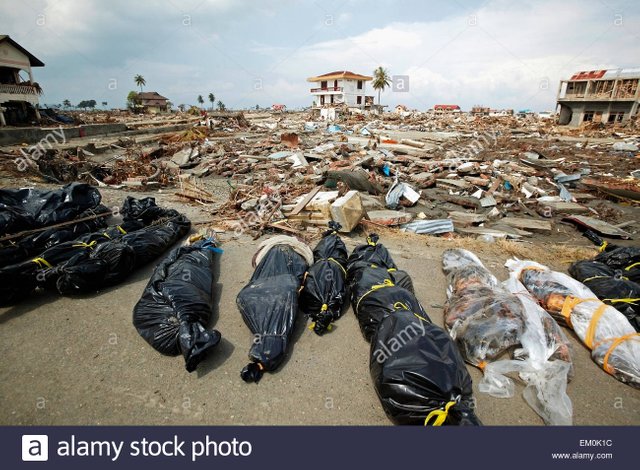
The horrific event claimed the lives of over 250,000 people and left thousands more missing and homeless following the devastation.
In more recent years these destructive walls of water have hit the headlines for causing havoc at the Fukushima nuclear power plant in Japan.
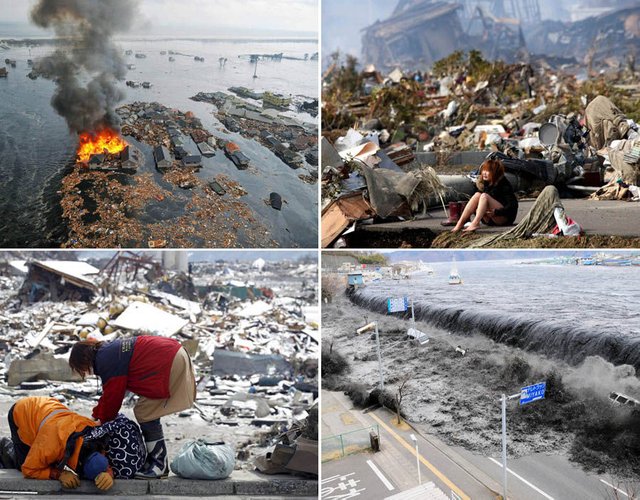
The Fukushima nuclear disaster
The tsunami in 2011, which was triggered by an earthquake, caused a series of explosions and meltdowns at the plant and became the world's worsr nuclear accident in 25 years.
More than 15,000 people died in the natural disaster and many more lost their homes and haven't been able to return.
Meanwhile, tsunamis have also struck off the coast of Chile and the South Island of New Zealand.
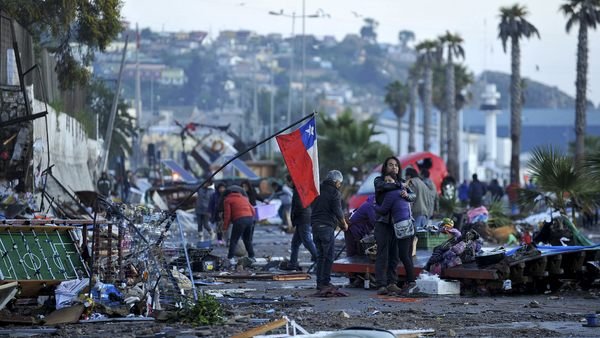
In July 2017, a 6.7 magnitude quake that struck Bodrum in Turkey and the Greek island of Kos also triggered a tsunami.
Witnesses told how sea levels dipped by about a foot before the tsunami struck, followed by mass floods shortly after.
On September 8 2017, an 8.1 magnitude quake struck off the coast of Mexico triggering tsunami warnings in eight central American countries.
Waves three feet above tidal level were detected as mass evacuations of coastal areas began.
How will I be warned about a tsunami?
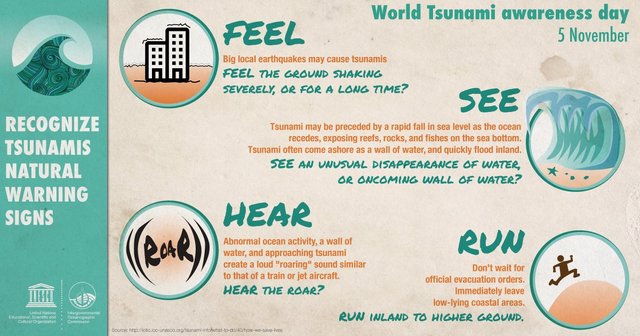
There are two types of tsunami warnings: official and natural.
Both are important. You may not get both. Respond immediately to whichever you receive first.
Official tsunami warnings
These warnings are broadcast through radio, television, and wireless emergency alerts. They may also come through outdoor sirens, officials, text message alerts, and telephone notifications.
In India, the Indian Tsunami Early Warning Centre hosted at the Indian National Centre for Ocean Information Services (INCOIS) in Hyderabad, Telangana is one of three regional centres of the Indian Ocean Tsunami Warning and Mitigation System (IOTWMS).
The Indian system will issue both national and regional alerts from its system, with color coding to differentiate “warnings”, “alerts” and “watches” at national level, and “threat” or “no threat” status to Indian Ocean nations. Messages will go out over SMS, email, global telecommunication system (GTS) and fax, with links to a web-based bulletin system, public within India and accessible via password to the 24 participating countries.
Natural warnings include:
A strong or long earthquake.
A loud roar (like a train or an airplane) from the ocean.
Unusual ocean behavior (the ocean could look like a fast-rising flood or a wall of water or it could drain away suddenly like a very low tide).
If you experience any of these natural warnings, even just one, a tsunami could be coming.
How do I respond to a tsunami warning?
If you are in a tsunami hazard zone and receive an official warning:
Stay out of the water and away from beaches and waterways.
Get more information from radio, television, or your mobile device (text or data).
If officials ask you to evacuate, move quickly to a safe place.
Follow evacuation signs or go as high or far inland (away from the water) as possible.
If you are in a tsunami hazard zone and receive a natural warning, a tsunami could arrive within minutes:
In case of an earthquake, protect yourself. Drop, cover, and hold on. Be prepared for aftershocks. Each time the earth shakes, drop, cover, and hold on.
Take action. Do not wait for an official warning or instructions from officials.
As soon as you can move safely, move quickly to a safe place. Follow evacuation signs or go as high or far inland (away from the water) as possible.
If there is earthquake damage, avoid fallen power lines, and stay away from weakened structures.
When you are in a safe place, get more information from radio, television, or your mobile device (text or data).
If you are on the beach or near water and feel an earthquake of any size and length, move quickly to high ground or inland (away from the water) as soon as you can move safely.
Get more information from radio, television, or your mobile device (text or data).
If you are outside of the tsunami hazard zone and receive a warning, stay where you are unless officials tell you otherwise.
What should I do after a tsunami?
Stay out of the tsunami hazard zone until officials say it is safe. The cancellation of a warning does not mean danger has passed.
Stay out of any building with damage or water around it until a professional or official says it is safe.
Get updates and safety instructions from radio, television, or your mobile device (text or data).
Source : Tsunami Awareness & Safety
It is our duty to spread the message about tsunami, and educate people about the warnings and dangers of tsunami.
In the case of a tsunami, staying safe is an ultimate priority and everyone should learn how to do this.
Government and environmental organisations should endeavour to put everything in order and set up a tsunami warning system and notification to curtail or minimize future casualties.
Let's us stay safe and hope for a better future, humanity and better world.
Happy Steeming
Have a lovely day

Congratulations! This post has been upvoted from the communal account, @minnowsupport, by enolife from the Minnow Support Project. It's a witness project run by aggroed, ausbitbank, teamsteem, theprophet0, someguy123, neoxian, followbtcnews/crimsonclad, and netuoso. The goal is to help Steemit grow by supporting Minnows and creating a social network. Please find us in the Peace, Abundance, and Liberty Network (PALnet) Discord Channel. It's a completely public and open space to all members of the Steemit community who voluntarily choose to be there.
You deserve a gold medal for this. Never knew a day of such existed.
May God save us all.
Congratulations @enolife! You have completed some achievement on Steemit and have been rewarded with new badge(s) :
Click on any badge to view your own Board of Honor on SteemitBoard.
For more information about SteemitBoard, click here
If you no longer want to receive notifications, reply to this comment with the word
STOPCongratulations @enolife! You have completed some achievement on Steemit and have been rewarded with new badge(s) :
Click on any badge to view your own Board of Honor on SteemitBoard.
For more information about SteemitBoard, click here
If you no longer want to receive notifications, reply to this comment with the word
STOP